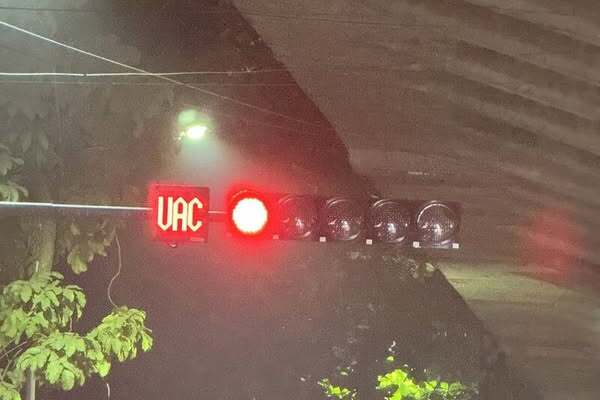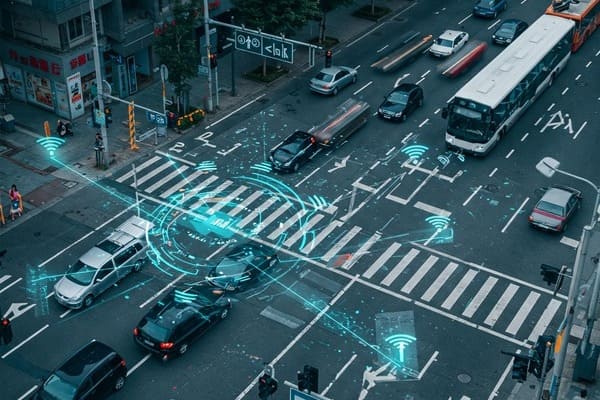Traffic congestion is one of the biggest urban challenges today, with cities worldwide struggling to manage growing vehicle numbers. Traditional traffic systems often rely on fixed-time signals, which fail to adapt to real-time road conditions. This is where Vehicle Actuated Control (VAC) in traffic signals comes in, allowing traffic lights to respond dynamically based on actual vehicle flow. With artificial intelligence (AI) now playing a pivotal role in optimizing VAC systems, cities are witnessing a new era of smarter, more efficient traffic management.

Understanding Vehicle Actuated Control (VAC) in Traffic Signals
VAC is a system where traffic signals adjust their timing based on real-time data from sensors detecting vehicle presence. Unlike pre-timed signals, which operate on fixed schedules, VAC responds to fluctuations in traffic demand, reducing unnecessary wait times. The system typically uses inductive loop detectors, infrared sensors, or video analytics to determine when and how long a signal should remain green. This adaptive approach helps alleviate congestion, minimize fuel consumption, and improve overall traffic flow.
AI-Powered Traffic Prediction Enhances Efficiency
AI-driven models analyze vast amounts of historical and real-time traffic data to predict congestion patterns. By recognizing trends such as peak hours and accident-prone areas, AI-powered VAC systems can proactively adjust signal timings before bottlenecks occur. Studies have shown that predictive traffic management can reduce congestion by up to 25%, significantly improving urban mobility. For instance, cities like Los Angeles and London have integrated AI-driven traffic forecasting, leading to smoother commutes and reduced emissions.
Computer Vision Optimizes Signal Timing
AI-powered cameras equipped with computer vision technology can monitor traffic in real time and make intelligent decisions about signal changes. These systems identify vehicle density, pedestrian movement, and even emergency vehicles, adjusting signals accordingly. This level of automation minimizes delays and ensures efficient intersection management. In New Delhi, AI-based adaptive traffic signals have cut wait times at intersections by nearly 30%, demonstrating the technology’s transformative impact.
Reducing Traffic Congestion with Smart Signal Coordination
AI enables real-time coordination between multiple intersections, creating a synchronized traffic flow. Unlike traditional systems that function independently, AI-controlled signals communicate with each other to optimize the entire road network. Cities using AI-based signal coordination have reported travel time reductions of up to 20%. For example, Pittsburgh’s smart traffic system, powered by AI, has decreased travel delays by 40% in certain areas, benefiting both commuters and the environment.

Prioritizing Emergency and Public Transport Vehicles
AI-enhanced VAC systems can prioritize ambulances, fire trucks, and public buses by adjusting traffic signals in their favor. This capability ensures emergency vehicles reach their destinations faster while maintaining a smooth flow for other road users. Several European cities have successfully implemented AI-driven transit signal priority (TSP) systems, reducing emergency response times by up to 25% and improving bus punctuality significantly.
Reducing Carbon Emissions Through Smarter Traffic Management
Traffic congestion leads to excessive fuel consumption and increased carbon emissions. AI-driven VAC systems reduce idle times at signals, cutting down on unnecessary fuel waste. Research indicates that optimizing traffic signals with AI can lower emissions by 10-15%, contributing to cleaner urban air. A notable example is Singapore, where AI-managed intersections have led to significant reductions in vehicular pollution, aligning with the city’s sustainability goals.
Enhancing Road Safety with AI Analytics
AI doesn’t just improve traffic flow; it also enhances safety by identifying risky driving behaviors and accident-prone zones. AI-powered analytics can detect speeding vehicles, red-light violations, and jaywalking, alerting authorities in real time. Some U.S. cities have deployed AI-driven safety systems that have cut down intersection-related accidents by nearly 20%, demonstrating how AI can actively prevent road mishaps.
The Future of AI in Traffic Management
As AI technology advances, traffic management will continue to evolve, integrating smarter solutions like connected vehicle networks and autonomous traffic control. Future AI systems could dynamically reroute vehicles, offer real-time congestion updates to drivers, and even adapt to weather conditions for safer commuting. With more cities investing in AI-driven traffic solutions, urban mobility is set to become faster, safer, and more sustainable.
AI’s role in revolutionizing traffic management is undeniable. By integrating AI with VAC systems, cities can create adaptive, intelligent road networks that reduce congestion, cut emissions, and enhance commuter experiences. As this technology continues to evolve, the future of urban transportation looks promising, with AI paving the way for smarter, more efficient traffic flow.




